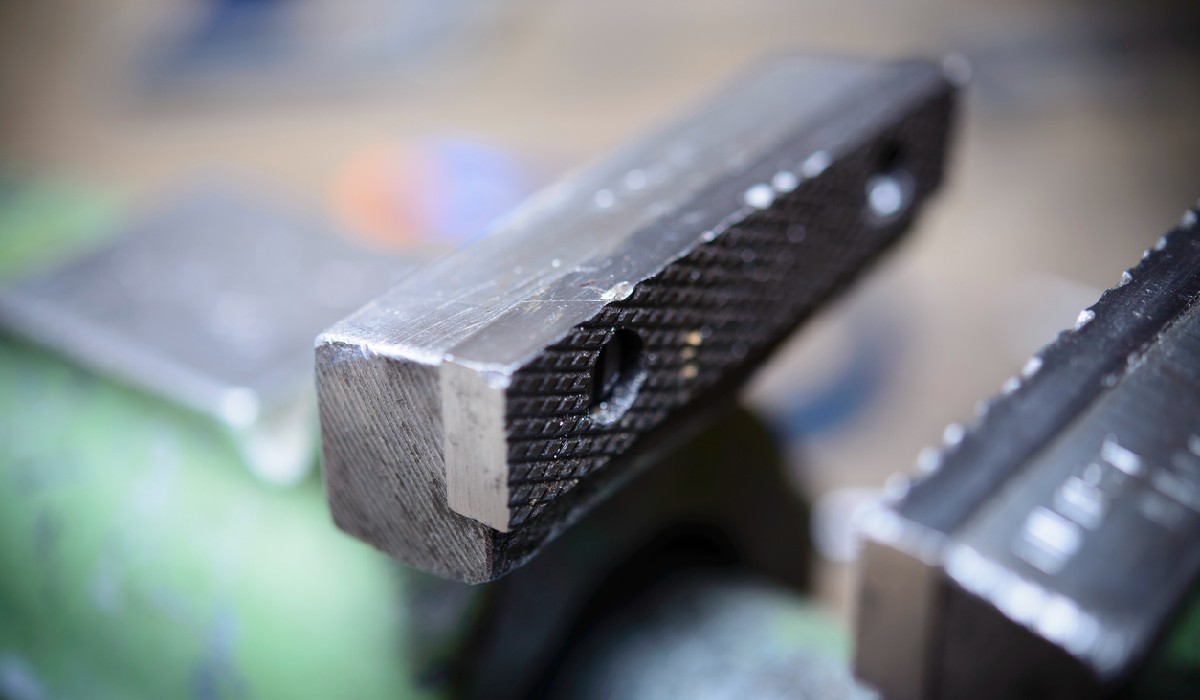Great Tools To Improve Precision While Working on Projects

Nothing is worse than when pieces of a woodworking project don’t fit together and nothing’s as satisfying as when they fit perfectly like a puzzle. Getting a real-life woodworking project that looks just like a pretty picture isn’t easy, and the hard truth is that it takes countless failures and continuous practice. But there are some tools and techniques that can help you immediately improve accuracy and precision in woodworking and they are extremely easy to learn.
While it may sound like a line from an advertisement, you should try these tools at least once to know that they actually work. We’ve curated a list of some amazing tools for better accuracy that allows you to bring your imagination to life.
MUST-HAVE TOOLS TO IMPROVE PRECISION
Soft jaw for vise
It’s likely that you’ve heard of the soft jaw for vise if you work as a CNC (computerized numerical control) machinist, an industrial engineer, or a DIY enthusiast. You can cut and bore incredibly accurate holes in your workpieces with these basic tools if you want to improve your precision. These tools are rubber or nylon inserts that fit into the jaws of your vise. When working on expensive products that demand precise grinding and polishing, they assist you in maintaining pressure, holding more delicate pieces, absorbing vibrations, and preventing slipping.
You must have a soft jaw for vise when milling to prevent the smaller component from dropping out of place. It also helps to protect your workpieces from dings and scratches.
Bits
Drill bits feature a spindle with one or more grooves that run along the outer parts of the tool. To accurately drill small holes, you should start with center drill bits and shift to a twist drill bit for more precision.
Fly cutters
When milling big and flat surfaces, a fly cutter is an ideal tool to create flawless finishes effortlessly. The fly cutter is usually made using a durable body, into which you can insert one or two bits. A holder, drawbolt, thrust washer, and left-handed carbide cutting tool are standard accessories for most fly cutters.
There are some versions that consist of a single tool bit held in a cylindrical body in the center, and you mostly need to hold it at an angle of 30 to 60 degrees and turn with the left hand. Fly cutters with two tool bits are common, and typically one is attached to each end of the tool. To get the most out of a light-duty mill, you just need a cutter with a single cutting edge. Fly cutters are often held in an angled holder so that, while the whole device spins, the tool bit can make both slanted and straight cuts. Like face mills, fly cutters have replaceable cutters and are mostly used for face milling.
Thread mill
These cutting instruments are ideal for cutting threads by milling. They work just like taps — the only difference is that taps cut inner threads, and thread mills can do both internal and external. Thread mills are indeed the perfect option if you wish to cut through solid metals or uneven parts. You usually use thread mills on numerically controlled (NC) machines that offer you complete tri-axle control and help with helical interpolation functions.
Hollow mill
These precision tools revolve around a circular surface and usually have three cutting edges. You can quickly and effectively make a pre-thread size with this cutting tool.
BEST MATERIALS FOR PRECISION FOR WORKING ON PROJECTS
Carbon steel
Carbon steel cutting tools have a reasonable price with amazing durability and precision. They are perfect for low-speed machining of softer materials.
High-speed steel (HSS)
The alloying components give high-speed steel its maximum heat index, corrosion resistance, and durability. You should opt for high-speed steel cutting tools for cutting both ferrous and nonferrous metals.
Carbide
Carbide is a compound of carbon and tungsten. These tools often have high heat, corrosion, and scratch resistance. In reality, they outlast steel-cutting tools in harsh environments by a significant margin.
Ceramic
These tools have durability against heat and rust. As ceramic is not reactive with the majority of metals so they are extremely stable. These tools offer a high cutting performance and are perfect for final finishing.
WRAPPING UP
While working on projects, we all want to avoid cutting-induced errors and machine tool errors. If you have the right tools in your woodworking arsenal, you can improve precision, accuracy, and efficiency while adding details to your projects.
